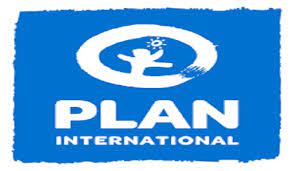Customer Relationship Management Crm
Content
And that’s true across the board—whether you’re a small business with a hundred customers or a large one with hundreds of thousands. Choose the collaborative CRM you want to increase transparency of customer data across teams. Never lose sight of the customer on your quest to find the right CRM software. If your CRM does facilitate a richer understanding of your customers and better customer service, it doesn’t matter.

Cloud document management company Box chases customers with remote and hybrid workforces with its new Canvas offering and … The main purpose of a CRM tool is to streamline business processes. Therefore, a business should ensure the prospective product is capable of easily integrating with existing applications and workflows. Finding prospects is an integral part of a sales team’s outreach efforts. Companies should analyze the conversion rates of prospects to weed out ineffective strategies. Once a company has gathered this information, it can divide its costs by the number of customers during the designated period, which provides the average cost of retaining a customer.
Types Of Crm Analytics
If you’ve got any questions at all about our research process, feel free to get in touch with Rob, our CRM specialist, at Simply take 30 seconds to complete our quick quote-finding form. Once you’ve provided us with a few details about your business, we’ll do the rest. All you need to do is sit back, relax, and wait for your phone to ring. When it does, there’ll be tailored quotes on the other end, ready for you to compare. They’ll then be in touch with quotes tailored to your business.

An analytical CRM will help you gather data, insights and information for you to take action and fuel business growth. They also have different price points and a unique onboarding process that match individual needs. Finally, CRM systems differ in how they are built and how businesses can benefit from them. Start learning how your business can take everything to the next level. The type of CRM you choose should be based on your company and its specific needs. After working with thousands of other companies on their CRM, we’ve distilled several top recommendations and packed them into a free CRM strategy guide.
Allows for a 360° view of the customer lifecycle from prospect to sale to customer support. It will enable for marketing team’s insights to connect with different parts of the organization. Train your staff to identify these prospects and trust the CRM’s data to maximize every sales opportunity. Some CRMs even suggest which products and services are a good fit based on artificial intelligence and natural language processing. Was a customer happy with their recent customer service interaction? Operational CRM triggers automatic surveys to increase customer satisfaction.
Potential Drawbacks Of Crm Systems
In addition, it integrates with invoice software to let you generate reports on your company’s cash flow. When a long-term relationship is the goal, collaboration between sales, marketing, and customer service is an important part of the equation. If you want all customer-facing employees to have access to up-to-date customer data each time they interact with a consumer, you need a CRM that connects everyone through one platform. An analytical CRM provides features that help you use the data you have to see trends in how your customers behave.

The right CRM empowers your team to deliver exceptional, personalized customer support. And it gives you the power to understand your customers better so you can adapt your customer relationship strategy to their needs and preferences. Many CRM software providers offer free trials, too, so you can test a free CRM and if it’s right for your business.
Developing Your Crm Implementation Strategy
With an inviting price point of just $9 per user, per month, and a completely free version, there’s plenty you’ll want to explore when it comes to Zendesk’s analytical CRM. Working with Zendesk’s solutions for both sales and customer service teams, Explore enables you to break down your business’s most complex data, and then rebuild it in digestible graphs and reports. Omnichannel capability allows you to see how people are relating to your brand across all platforms, too – including email, social media, chat, and phone.
Some inevitable questions come along with deciding on which type of CRM your company needs. Business moves quickly, and you need a CRM that will grow with your organization. Most CRM solutions today are sold as Software as a Service subscription. Each of these can’t be found in a silo, a collaborative CRM hosts and distributes these actionable business insights. When customer information is collected, organized, and shared across your organization, it gives your entire team unique insight into the customer’s needs. Do your high-ticket items sell better in the winter or the summer?
- The key profit of any business lies in customer loyalty, which can be measured and worked upon through thorough campaign and customer analysis.
- This type of CRM also uses automation to accomplish its goals.
- Most users of this type of CRM include data analysts, accountants, as well as business intelligence professionals.
- This helps you to understand your customers’ behaviors and how best to reach and engage them.
- This is an important metric to monitor for companies offering subscription-based services that require customers to renew their contracts periodically.
- Your CRM system gives your team insight into customer demographics, past purchases, and buying habits.
If your workforce isn’t trained on how to use a CRM, it’s useless. Establish how much it will cost to configure the system to your needs and personalize training sessions, not simply online tutorials. Find a CRM vendor who has worked with similar companies and industries. By researching a vendor’s website, you can learn which companies they collaborate with. You can also check Capterra or FeaturedCustomers.com for client testimonials, references, scores, etc. Once you have done your initial soul-searching and know why you need CRM, it is time to narrow down precisely what you need in a CRM.
Sales And Sales Force Automation
Grab our free comparison report to see which products have the strongest analytics capabilities, and start on your journey to putting your data to work. Based on the user sentiment, you can offer a customer-centric solution to help build and maintain brand loyalty. This analysis also helps you improvise problem areas such as customer service, response time, follow-ups, cross-selling and upselling services and more. Customer journeys tend to differ based on the kind of purchase.

With more reliable information, their demand for self-service from companies will decrease. If there is less need to interact with the company for different problems, customer satisfaction level increases. These central benefits of CRM will be connected hypothetically to the three kinds of equity that are relationship, value, and brand, and in the end to customer equity. The third primary aim of CRM systems is to incorporate external stakeholders such as suppliers, vendors, and distributors, and share customer information across groups/departments and organizations. For example, feedback can be collected from technical support calls, which could help provide direction for marketing products and services to that particular customer in the future.
Platform Features
Customer profiling is a method to understand your customers in terms of demographics, behaviour and lifestyle. It is used to help make customer-focused decisions without confusing the scope of the project with personal opinion. The three basic methods of customer profiling are the psychographic approach, the consumer typology approach, and the consumer characteristics approach. These customer profiling methods help you design your business around who your customers are and help you make better customer-centered decisions.
Business owners also employ this type of CRM to generate leads, convert leads into customers, record contact details, and serve customers. It also allows you to facilitate accounting, inventory, project, and human resource functions from a single system. There are three fundamental types of CRM, but all of them aim to improve customer relationship and service. Operational CRMs do this by automating your business processes to save you time and effort.
Collection of customer data such as personally identifiable information must strictly obey customer privacy laws, which often requires extra expenditures on legal support. The main differences between business-to-consumer and business-to-business CRM systems concern aspects like sizing of contact databases and length of relationships. The implementation of a CRM approach is likely to affect customer satisfaction https://xcritical.com/ and customer knowledge for a variety of different reasons. Opportunity management which helps the company to manage unpredictable growth and demand, and implement a good forecasting model to integrate sales history with sales projections. Data warehouse technology, used to aggregate transaction information, to merge the information with CRM products, and to provide key performance indicators.
As a company-wide platform, a collaborative CRM is used by everyone in the company, not just customer-facing teams. Analytics – The analytics engine within Nextiva is incredible. All your customer, prospect, and employee data is ingested and analyzed together. From call center data, sales performance, customer satisfaction, sales pipelines, analytical crm and more—it all comes together so you can make better business decisions. Powerful customer data tools allow for the mining of marketing data to unearth recommendations that help you attract and convert more potential customers. CRM software stores interactions between customers, vendors, team members, and other business contacts.
Predictive Analysis
As expected, you’ll have to be ready to shell out more for the real robust analytic features with Bitrix24. Insightly is not one of the most affordable CRM systems, especially as you’ll need the more premium version for the analytics. You’ll be able to avoid outdated, ineffectual mass-blast marketing once and for all. All-in-one app including CRM for teams to organize, collaborate & grow. We have highlighted seven basic tips that will help you understand how to get the most out of Hubspot and definitely see better results in …
Market trends and client preferences help you plan your marketing for the future. Based on past and current trends, you’ll have a better idea of what’s working in marketing and sales, and what’s not, and be able to direct resources accordingly for best results. While this is also an advantage of operational CRM, tracking software can deliver analytical intelligence across departments. By focusing on the prospects most likely to be persuaded by their efforts, your sales and marketing teams can learn to maximize time and resources further. This might sound simple and straightforward, but it requires a lot of collaboration, and any loopholes can cost you dearly. Collaborative CRM tools handle all the routine tasks through automation.
These businesses know the buying behavior of the customer that happy customers buy more frequently than rest of the customers. If any business is not considering this type of CRM, then it risks losing the market share to those businesses, which excel at strategic CRM. Strategic CRM is a type of CRM in which the business puts the customers first. It collects, segregates, and applies information about customers and market trends to come up with better value proposition for the customer.
The answers to questions like these are important for identifying weaknesses in your current approach and figuring out what changes to make for better results. Analytical CRMs are useful in this step because they use data mining—a technological process for analyzing large sets of data to find trends within them. It’s something technology is much better at than humans—especially as the quantity of data you have grows. Some collaborative CRMs also help companies consolidate where they store important customer documents.
Anticipating and delivering service and support before the customer recognizes the need represents the final stage in the evolution of customer service practices within an enterprise. As well as increasing the use of analytical CRM software over time, as you collect more and more valuable data, you can also gain more benefits over time by using analytical CRM. And with that said, the time now to get started is as good as any other. It will assist you in sorting out what exactly prompted someone to become your customer.
Become A Better Business
Once you’ve usedInsightlyto plan and execute your marketing strategies including email marketing campaigns, you can turn to their analytics to assess their success. Insightly’s analytics also run on the CRM data at the heart of their system. Freshworks is the umbrella company for a large number of products, including Freshsales, Freshmarketer and Freshdesk. Freshdesk Neo is their analytics tool which works in many of their products.
Equip your support team with a robust cloud phone system and provide every else cloud phone service. This connects every team member in your company, even your remote employees. It involves interaction management between individuals and departments.
It covers sales, marketing, customer service, and technical support teams, as well as customers, creditors, vendors, suppliers, and distributors. This type of CRM also uses automation to accomplish its goals. An operational CRM manages and tracks your company’s interactions with your prospects and customers to help you acquire new customers and retain existing ones.




